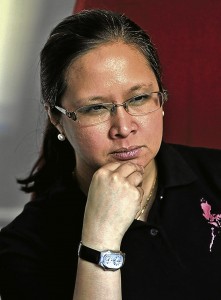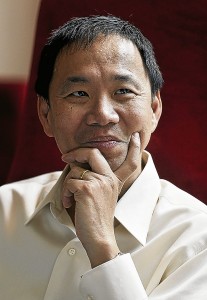Carlos Arnaiz, who’s also designing the Boracay airport, uses fresh eyes to keep from repeating himself
By: Alex Y. VergaraPhilippine Daily Inquirer
Style is one word Carlos Arnaiz, a Filipino-American architect based in New York, tends to avoid when asked to describe what sets him apart from fellow practitioners. And he has a good reason to do so.
Aranaiz was in Manila recently to oversee projects. They include the Shrine of Mary, a Catholic church to rise in a reclaimed area in Cebu, and the new and bigger Boracay International Airport, a public-private partnership between the national government and San Miguel Corp.
“What I try to do is produce something that hasn’t been seen before,” he said. “Sometimes, I hope it’s something that I haven’t seen before.”
To achieve this, he and his team rely more on methodology. His “research-based” approach to doing projects requires him to focus more on their context as well as clients’ needs and issues that need to be addressed.
“People like to say that architecture is an art,” said Arnaiz, a product of Xavier School and International School in Manila. “I tend to disagree. For me, art is more utopian.”
Not that there hasn’t been utopian architecture, he conceded. But unlike painting and poetry, which don’t require a client, architecture requires one. The degree of collaboration between architect and client is usually an ideal gauge of how successful a project would be.
Arnaiz, who finished architecture at Harvard University, has been practicing for a little over 12 years now. After working for a number of firms in the US, he put up his own architecture firm in Brooklyn, CAZA or Carlos Arnaiz Architects, almost four years ago, and now employs a dozen or so associate architects from various parts of the globe.
Other than in the US and the Philippines, CAZA has ongoing projects in Colombia (Arnaiz’s mother hails from there), Brazil and Taiwan. The company has also done projects in Korea, Malaysia and Costa Rica.
Master plan
Once finished, the Boracay International Airport, which is located in Caticlan, can accommodate more and bigger planes to and from the world-famous tourist destination.
“I’m quite excited about the Boracay project,” said Arnaiz, 35. “We’re not doing any construction yet, as we’ve just been through the master plan.”
But the overhaul will be massive. The terminal building will be just one of eight new buildings in an airport that will be expanded from 800-2,000 meters. People behind the project will have to work around the old airport without disrupting current operations.
“One of the main challenges is how to make a responsive airport without making it, particularly the terminal building, too generic,” he said. “An airport’s functionality requirements are quite intense, but how do you make a building that’s relaxed? A lot of today’s airports feel overwrought. They’re trying to do too much.”
The 1,000-seat, 2,220-sq m Shrine of Mary is in the South Reclamation Zone in Cebu. Arnaiz plans to create a main entrance set against a series of walls with varying heights.
The project is financed by SM, which is building a mall complex in Cebu similar to SM Mall of Asia in Manila.
 The entrance evokes the mystery one supposedly experiences while wandering through a mythical forest. The series of walls symbolizes the many paths and obstacles one goes through to arrive at one’s own enlightenment, said Arnaiz.
The entrance evokes the mystery one supposedly experiences while wandering through a mythical forest. The series of walls symbolizes the many paths and obstacles one goes through to arrive at one’s own enlightenment, said Arnaiz.
“Construction started this month. The building should be finished before the end of 2012. The owners’ goal is to have Christmas Mass celebrated in the church this year,” he added.
CAZA is also into urban planning and gentrification. The company will have a project with the Cebu City government to improve the streetscape of historic Osmeña Avenue.
The gentrification project along the 2 km stretch entails creating a series of sidewalks, patterns and monuments from downtown to the city hall building. It also involves a series of “traffic-calming” devices, lamps and benches.
“It’s probably one of the simplest and humblest projects we’ve done, but it’s one of my favorites,” said Arnaiz. “It’s different from other projects we’ve done, that’s why I’m proud of it.”
Permutations
Arnaiz has no problem with creating something distinct and recognizable. But doing permutations of a particular look more than once can be quite limiting. A classic example would be that of esteemed American architect Frank Gehry, the man behind the Guggenheim Museum in Bilbao and the almost similar (at least, from the outside) Disney Music Hall in Los Angeles.
“Gehry himself complained that the Bilbao project pigeonholed him,” said Arnaiz. “People would hire him and say they want a Bilbao. In a way, he has become a victim of his own success. I have a great deal of respect for him, but he himself is trying to change and innovate.”
Repeating one’s design through a distinct look is something Arnaiz consciously tries to avoid. The key here, he said, is to approach every project with a fresh pair of eyes.
“Every time we start a project, we treat it as something entirely new,” he said. “We adopt an approach that’s anchored on the belief that we can organically grow something from within.”
And instead of showing clients variations based on a particular theme, Arnaiz and his associates, working in teams, produce multiple alternatives that are totally different from each other. This, he said, goes against the grain of industry practice.
“I want to promote conversations based on the client’s reactions,” he said. “Everything, of course, is based on his needs, which he doesn’t usually know how to translate. In that translation, something magical happens. Something which, I hope, goes beyond what the client expected.”
In his book, great designers produce excess—excess that isn’t tantamount to waste, but excess that can be both beautiful and utilitarian.
When in Cebu City, please visit gregmelep.com for your real estate and retirement needs.
Avail of the opportunity to own a condominium unit in Cebu City for only P12,000.00/month with its own parking lot. Hurry while the supply of units last. Just call the Tel. Nos. (053)555-8464/09164422611/ 09173373687






